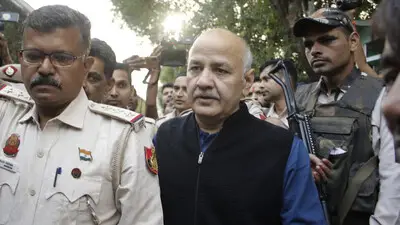Recommended Stories
A meeting of the Union Cabinet, chaired by Prime Minister Manmohan Singh, gave its nod for conducting a census in rural and urban areas to identify those living below poverty line (BPL).
The enumeration on the basis of caste and religion would be part of the census, that would begin in June and end by December this year, Information and Broadcasting Minister Ambika Soni said after the cabinet meeting.
This is the first time that the mammoth head count is being carried out to identify the poor along with their caste and religion. While the last BPL census was carried out in 2002, this is the first effort to carry out caste census since 1931.
The paper-less exercise would be carried out by the state governments through low-cost hand-held devices to be manufactured by state-run Bharat Electronics Limited.
It would help identify the proportion of every religion and caste among the BPL category.
While the BPL data for urban and rural poor would be utilised for the 12th Plan, the targetted subsidy schemes as well as the Unique Identification programme (UID), the data on caste and religion would remain confidential.
The Ministries of Rural Development, Housing and Urban Poverty Alleviation and the Registrar General of India would jointly conduct the census.
"This completely fulfils the assurance given by government in Parliament to have caste-based census along with the socio-economic profiling. Political leaders demanded this", Soni said.
Under the exercise, all relevant households which have been enumerated would be revisited, with the enumerators, mostly from the state governments, going door to door.
The identification of urban poor is being carried out for the first time as earlier only the rural population was enumerated to help them avail targeted BPL benefits, a senior Rural Development Ministry official said.
The rural population would be divided into three categories, including exclusion of those above poverty line and automatic inclusion of in the BPL category.
The last category would enable identification of the targeted population by using seven parameters (or deprivation indicators) and ranked accordingly. The parameters include households with only one room, those without any adult member between 16-59 years of age and no literate adult above 25 years.
The responses would be fed into a hand-held PC tab and the data uploaded on central server at the tehsil level. The device would be supplied by Bharat Electronics Limited, starting June.
The time-frame of conducting the census has been worked out and the state government employees would be employed to carry out the exercise as teachers would not be available for it, the official said.
He said the information on caste and religion at the individual level would remain confidential and the overall figures would be published separately.
Meanwhile, Rural Development Minister Vilasrao Deshmukh said on the sidelines of a function here that BPL survey would be started by the end of next month and it will be based on separate criteria.
"As far as BPL survey is concerned, the Cabinet has given its nod today. The programme will start by the end of June. It will be completed as soon as possible," he told reporters.
"....we are doing this door to door survey to get the information because there are three categories," the Minister said, referring to categories like "compulsory exclusion" and "compulsory inclusion" in the proposed list.
"There are criteria that we have laid down. The survey will be done accordingly, and that will be properly assessed," he said.












